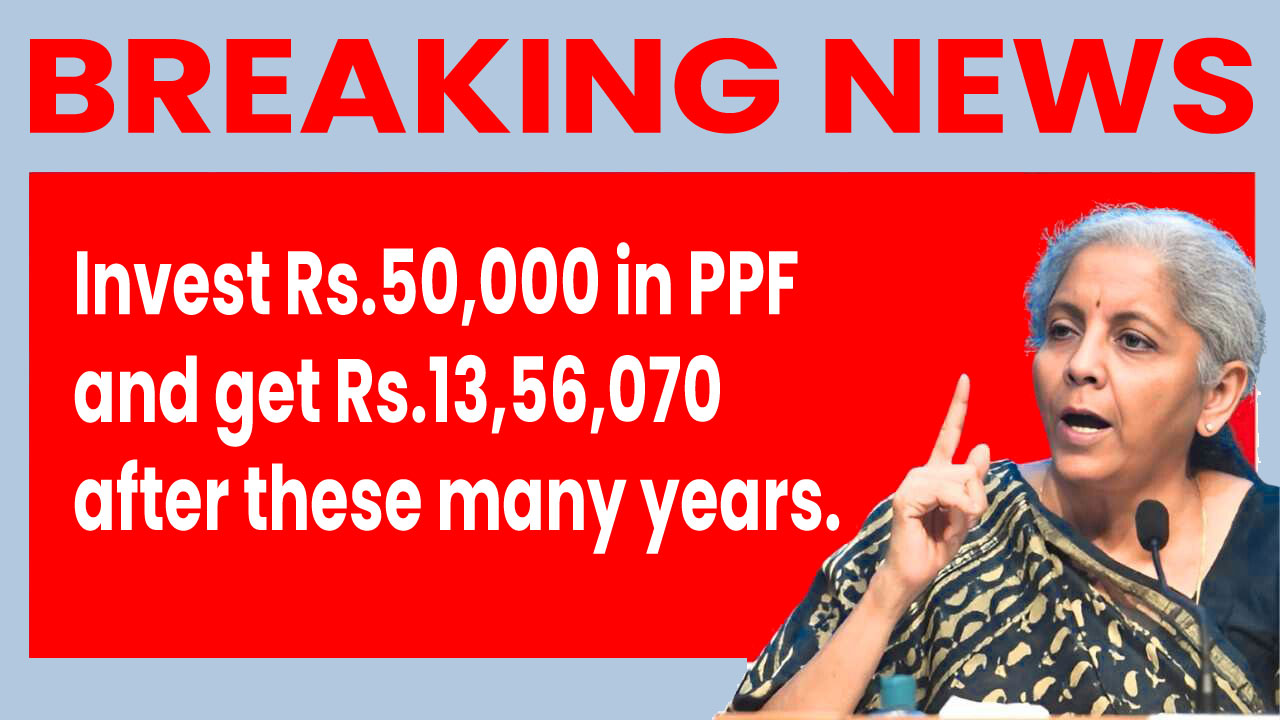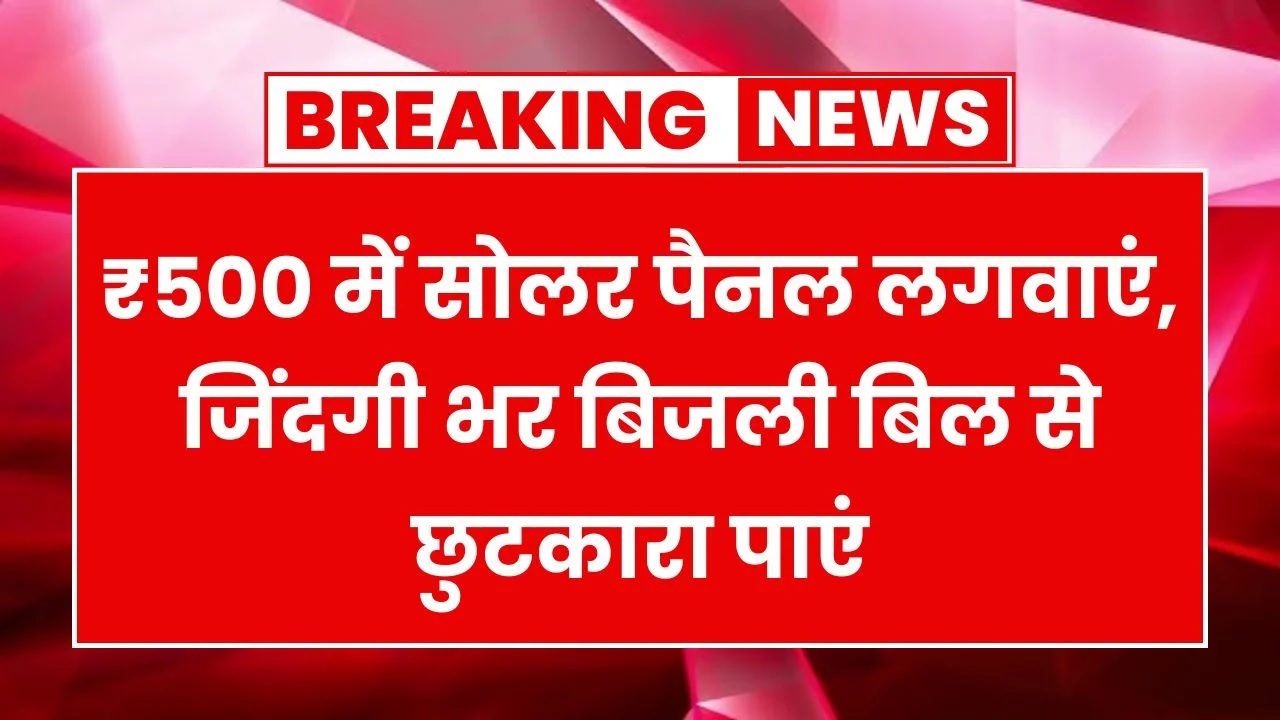Public Provident Fund (PPF): Learn how investing ₹50,000 annually in PPF can grow to ₹13.56 lakhs in 15 years. Get details on interest rate, tax benefits, features, and a real example.
Are you looking for a safe, long-term investment that not only builds wealth but also helps you save on taxes? The Public Provident Fund (PPF) might just be the ideal option. This government-backed small savings scheme is perfect for risk-averse investors seeking consistent returns and tax benefits.
In this post, we’ll break down the details of the PPF scheme, how an investment of ₹50,000 per year can grow to ₹13,56,070 in 15 years, and why it is one of the most popular investment choices for Indians.
What is the Public Provident Fund (PPF)?
The Public Provident Fund (PPF) is a long-term savings scheme introduced by the Government of India in 1968. It is aimed at encouraging citizens to save small amounts regularly and build a sizable corpus over time. The PPF account comes with a lock-in period of 15 years and offers attractive compound interest that is completely tax-free.
Key Highlights:
- Interest Rate: Currently 7.1% p.a. (subject to quarterly revision by the government)
- Lock-in Period: 15 years (extendable in blocks of 5 years)
- Minimum Investment: ₹500 per year
- Maximum Investment: ₹1.5 lakh per year
- Tax Benefits: Exempt-Exempt-Exempt (EEE) status under Section 80C of the Income Tax Act
Why Choose PPF for Investment?
Here’s why the PPF scheme is a smart choice for long-term investors:
- Safe and Secure: Backed by the Government of India, so your money is completely safe.
- Tax-Free Returns: Interest earned and maturity proceeds are fully exempt from tax.
- Compounding Power: Long-term tenure with compounding interest boosts wealth accumulation.
- Partial Withdrawals & Loan Option: Flexibility to withdraw or take loans after a few years.
- Flexible Investment: You can invest as little as ₹500 or as much as ₹1.5 lakh per year.
Real Example: Invest ₹50,000/Year, Get ₹13,56,070 in 15 Years
Let’s look at a real-world scenario to understand the power of PPF.
Investment Scenario:
- Annual Contribution: ₹50,000
- Investment Duration: 15 years
- Interest Rate: 7.1% per annum (compounded yearly)
Expected Returns Table:
| Year | Annual Contribution | Total Contribution Till Date | Interest Earned | Total Balance |
|---|---|---|---|---|
| 1 | ₹50,000 | ₹50,000 | ₹1,775 | ₹51,775 |
| 2 | ₹50,000 | ₹1,00,000 | ₹5,427 | ₹1,07,202 |
| 3 | ₹50,000 | ₹1,50,000 | ₹9,658 | ₹1,59,210 |
| 4 | ₹50,000 | ₹2,00,000 | ₹14,493 | ₹2,14,703 |
| 5 | ₹50,000 | ₹2,50,000 | ₹19,963 | ₹2,74,666 |
| 6 | ₹50,000 | ₹3,00,000 | ₹26,099 | ₹3,40,765 |
| 7 | ₹50,000 | ₹3,50,000 | ₹32,939 | ₹4,13,704 |
| 8 | ₹50,000 | ₹4,00,000 | ₹40,519 | ₹4,94,223 |
| 9 | ₹50,000 | ₹4,50,000 | ₹48,879 | ₹5,83,102 |
| 10 | ₹50,000 | ₹5,00,000 | ₹58,063 | ₹6,81,165 |
| 11 | ₹50,000 | ₹5,50,000 | ₹68,117 | ₹7,89,282 |
| 12 | ₹50,000 | ₹6,00,000 | ₹79,093 | ₹9,08,375 |
| 13 | ₹50,000 | ₹6,50,000 | ₹91,045 | ₹10,39,420 |
| 14 | ₹50,000 | ₹7,00,000 | ₹1,04,029 | ₹11,83,449 |
| 15 | ₹50,000 | ₹7,50,000 | ₹1,18,107 | ₹13,56,070 |
✅ Final Amount after 15 years: ₹13,56,070
✅ Total Investment: ₹7,50,000
✅ Total Interest Earned: ₹6,06,070
How is PPF Interest Calculated?
PPF interest is calculated monthly but added to your account at the end of every financial year (March 31). The formula is based on the lowest balance in your account between the 5th and last day of the month.
Tip:
To maximize your PPF interest, deposit your amount before the 5th of every month.
Tax Benefits of PPF
PPF enjoys the EEE (Exempt-Exempt-Exempt) tax status:
- Investment (Exempt): Get a deduction of up to ₹1.5 lakh under Section 80C.
- Interest (Exempt): Annual interest earned is not taxed.
- Maturity (Exempt): Entire maturity amount is tax-free.
How to Open a PPF Account?
You can open a PPF account online or offline at any authorized:
- Post Office
- Public Sector Bank (e.g., SBI, PNB)
- Private Sector Bank (e.g., ICICI, HDFC)
Documents Required:
- Identity Proof (Aadhaar/PAN)
- Address Proof
- Passport-size photograph
- PAN card (mandatory)
Online PPF Account Opening (Step-by-Step)
- Log in to your bank’s net banking portal.
- Navigate to “Open PPF Account.”
- Fill in the required details.
- Submit and verify with OTP.
- Your PPF account will be opened, and the account number will be shared instantly.
Rules and Features of PPF Scheme
| Feature | Description |
|---|---|
| Lock-in Period | 15 years |
| Minimum Deposit | ₹500 per financial year |
| Maximum Deposit | ₹1.5 lakh per financial year |
| Number of Deposits/Year | Up to 12 (once a month or lump sum) |
| Interest Compounding | Annually |
| Premature Withdrawal | Allowed after 7th year (partial) |
| Loan Facility | Between 3rd and 6th year (up to 25%-50% of balance) |
| Account Extension | In blocks of 5 years with or without contribution |
| Transferable | Between banks and post offices |
When Can You Withdraw from PPF?
- Partial Withdrawal: From the 7th year onwards, up to 50% of the balance at the end of the 4th year or preceding year.
- Full Withdrawal: Only after 15 years of account maturity.
- Extension: Can be extended in 5-year blocks, with or without further contributions.
Pros and Cons of PPF Investment
✅ Advantages:
- Completely risk-free
- Tax-free returns
- Government-backed scheme
- Helps build a disciplined savings habit
- Long-term wealth creation through compounding
❌ Disadvantages:
- Long lock-in period
- Limited liquidity (withdrawals and loans allowed only after specific periods)
- Lower returns compared to equity or mutual funds
Tips to Maximize Returns from PPF
- Always deposit before 5th of each month to get interest for the full month.
- Invest the entire yearly amount in April to enjoy compounding throughout the year.
- Avoid skipping yearly contributions to keep the account active.
- Extend your account in 5-year blocks after 15 years to continue earning tax-free interest.
PPF vs Other Investment Options
| Feature | PPF | Fixed Deposit | Mutual Funds | ELSS |
|---|---|---|---|---|
| Risk | Low | Low | High | Moderate to High |
| Lock-in | 15 years | 5 years | None (open-ended) | 3 years |
| Returns | 7.1% (current) | ~6.5% | 10%-15% (variable) | 12%-15% (historical) |
| Tax on Returns | Tax-Free | Taxable | Taxable | Tax-Free (under 80C) |
| Tax Benefit (80C) | Yes | Yes (for 5Y FD) | No | Yes |
Frequently Asked Questions (FAQs)
1. Can NRIs invest in PPF?
No, Non-Resident Indians (NRIs) are not allowed to open new PPF accounts.
2. What happens after 15 years?
You can either withdraw the full amount or extend the account in 5-year blocks.
3. Is the PPF interest rate fixed?
No. It is revised every quarter by the Ministry of Finance.
4. Can I open more than one PPF account?
No. One individual can hold only one PPF account (except for accounts opened for minors).
Conclusion
If you’re aiming for a safe, tax-saving, long-term investment, then the Public Provident Fund is an excellent choice. As shown in the example, an annual investment of ₹50,000 over 15 years can grow to ₹13.56 lakhs, completely tax-free.
While the lock-in period may seem long, it enforces disciplined savings and allows your money to grow with the power of compounding. It’s ideal for building a retirement corpus, children’s education fund, or even a future emergency buffer.







